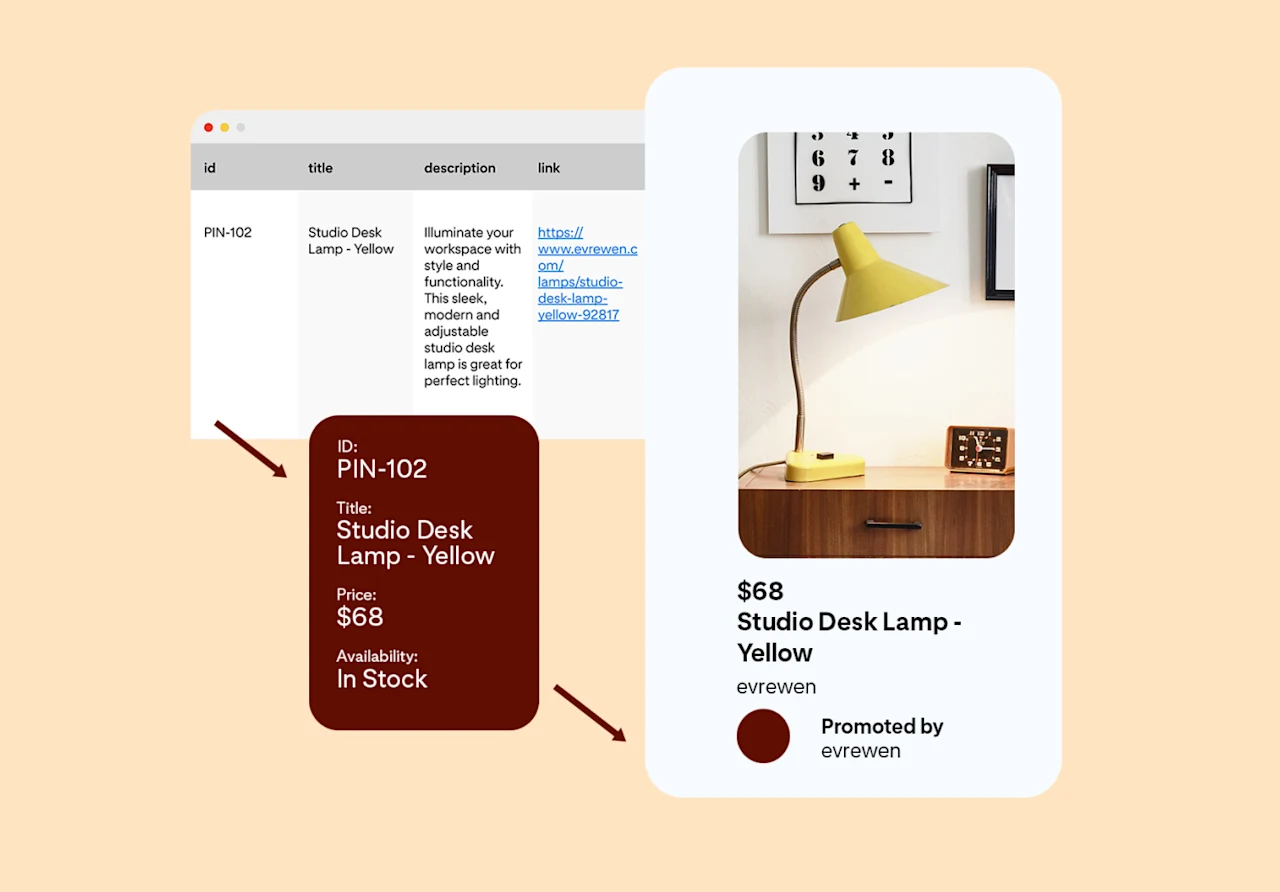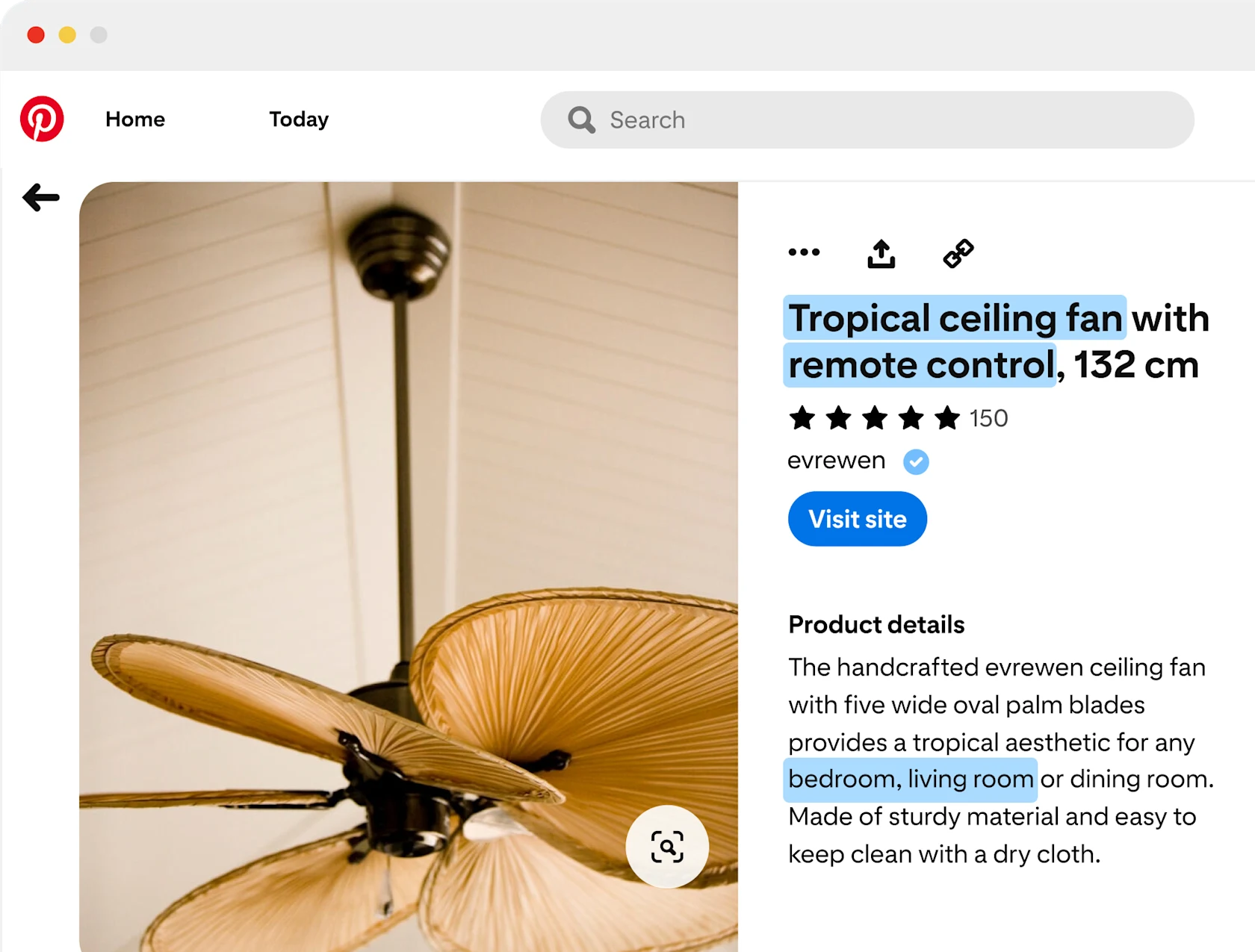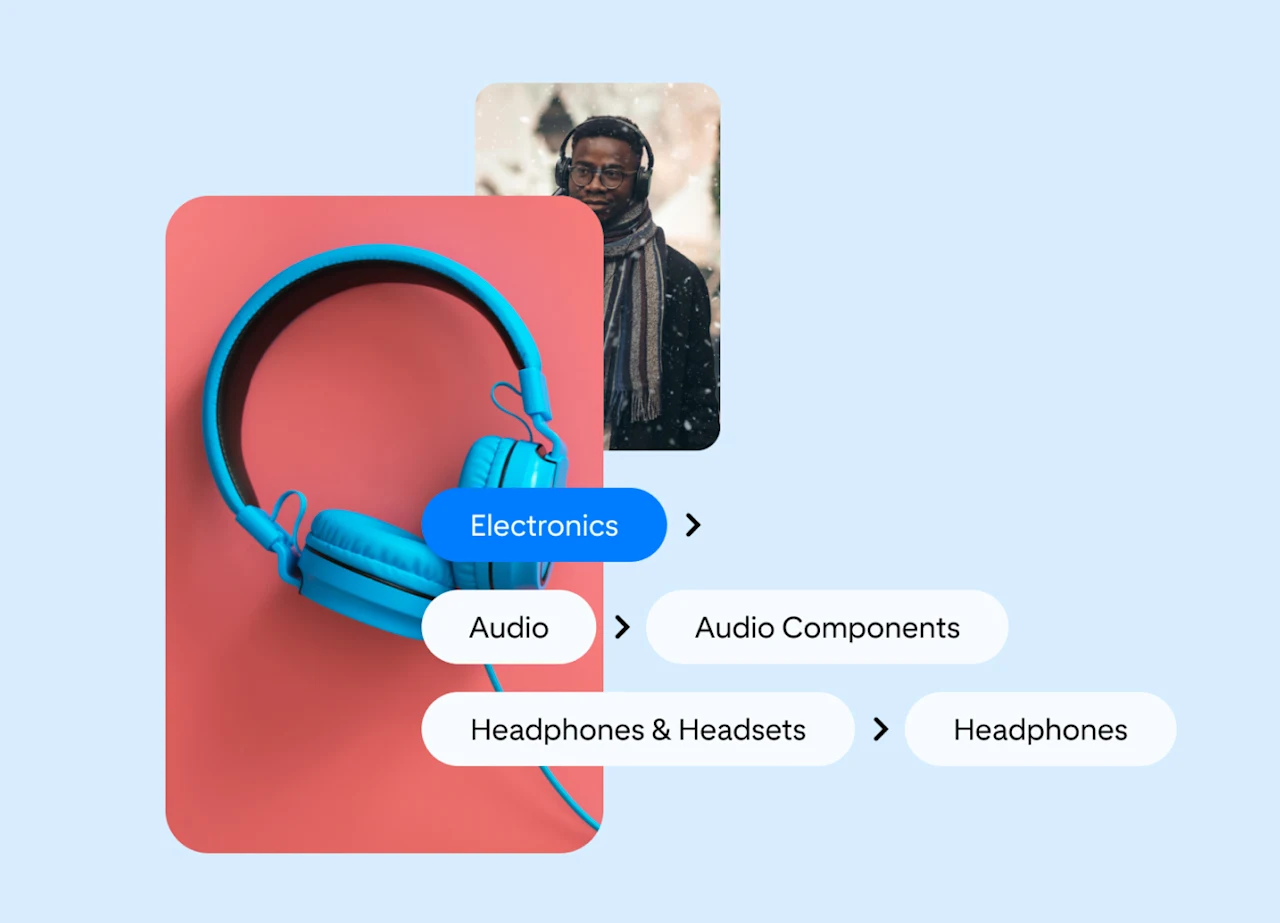How to optimise your product feed on Pinterest
25 January 2024

Selling products on Pinterest? You’ll want to read this. We’re sharing our top tips to optimise your product feed and get in front of more shoppers. A better feed means better performance. And better performance means more potential customers finding your brand and buying from your shop.
If you’re already using Pinterest for sales objectives, you’ve probably already uploaded your product feed. But… when was the last time you gave it a makeover?
Your product feed (also known as a data feed, data source or product catalogue) powers important lower funnel tools such as product Pins and shopping ads. Its data informs how our system recommends your content across Pinterest and which people see your Pins. It also impacts how your brand appears on the platform, with important information such as product description and images on the actual Pins.
Your data is only as powerful as you make it. So we recommend occasionally fine-tuning your feed to ensure that it is in optimal health. After studying hundreds of Pinterest campaigns, we’ve narrowed down our key tips for optimal product feeds. They span three main topics: metadata, product organisation and targeting.
Let’s dig in.
Make your metadata meaningful
Your product feed’s metadata contains helpful information about the products that you want to showcase. Its inputs include Pin fields such as title, description, price and category. Pinterest then uses your metadata to target your product Pins towards the people most likely to be interested in them.
Add more detail
Because our systems pull from these fields to inform recommendations and targeting, you’ll want to make these fields really comprehensive. That means clear, specific information about each product that you’re selling on Pinterest.
For example, let’s say you’re trying to sell a desk lamp. Your metadata should include precise information for the title field, description and price. Think about the types of characteristics that your audience might be interested in that could really help to explain what you’re selling. For example, does it have a plug or is it battery-powered? Yellow or black? The more details that you can provide, the more effectively Pinterest can target your product Pins towards potential shoppers.

Use keywords in your titles and descriptions
Think about how people search for products like yours, and include meaningful keywords in text fields. This will help to improve your discoverability for both people searching for specific ideas, and people casually browsing in your product category. Win-win.
Using a mixture of broad and exact words and phrases will help to trigger more queries. For example, the title and description of this featured Pin have several keywords that our system can use to target this product towards people looking for fans or similar products. Using a combination of broader keywords such as ‘bedroom’ and ‘living room’ with more exact descriptors, such as ‘tropical ceiling fan’, can help your ads or Pins to appear in more searches and feeds.

Perfect your product groupings
Product groupings power delivery behind the scenes, so they’re not outwardly visible to people using Pinterest to shop. Rather, they impact how our systems decide which products to show and where. Tagging your products into multiple levels of categorisation will help you to score more highly in relevant searches and shopping categories. Skip a category—and you might accidentally skip a shopper.
Add multiple levels of product classification
Make your product categories as detailed as possible. For example, if you sell headphones, don’t just include the word ‘Electronics’ as the sole category in your product feed. Use a full taxonomy of broader categories and subcategories to help our systems to parse more opportunities to show your product. Items with multiple levels of product hierarchy can also positively impact checkout propensity.1
For headphones it might look like this: Electronics > Audio > Audio Components > Headphones and headsets > Headphones

Make it easy for shoppers to find your products
Product groups are collections of related products that share similar characteristics such as style, price range or intended use. Think of them as shop departments or aisles. For example, a furniture shop might have product groups for upscale wooden furniture or farmhouse-style décor. You wouldn’t want your customers to arrive at your shop and find all the products thrown together—so don’t do this on your feed either. Think about how you organise products within your Pinterest profile so that it’s easy for shoppers to find what they want.
Keep an eye on segmentation
When you run shopping ads, you can promote specific product groups. This helps shoppers to discover a wider range of your products that they might like to buy. Whilst it might be tempting to put products in every possible group, you should only include them once in any given category. Not only does this improve the shopping experience, it also helps you to measure campaigns more efficiently on your end.

Avoid targeting restrictions
Your feed’s metadata is just one of the many signals that Pinterest uses to power recommendations and targeting. It’s best to let the platform’s tools and algorithms work their magic, without adding extra restrictions on top.
So when you run shopping campaigns, avoid adding your own targeting restrictions. It may seem counterintuitive at first, but adding restrictions can actually limit your reach and reduce the effectiveness of our other tips. Trust the feed and trust the process. Let the power of Pinterest and your metadata do the heavy lifting!
Ready, set, optimise
Now that you’ve got your optimisation ducks in a row, you’re ready to go. Head over to Pinterest catalogues to check your data sources and start refining your connected feeds. If you have a Pinterest rep, you can also ask them to check your feed health score for additional insights.
These feed tips are part of a broader series about lower funnel campaigns on Pinterest. For more best practices, take a look at the free Path to Performance course and the Manage and Optimise your Catalogue course on Pinterest Academy.

